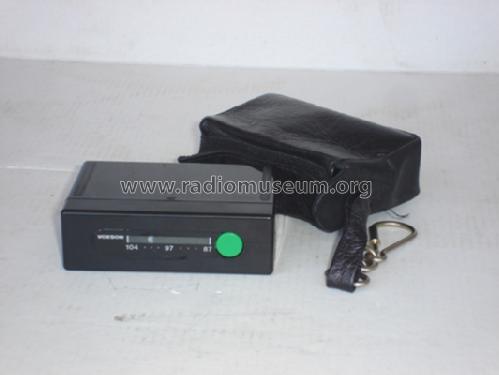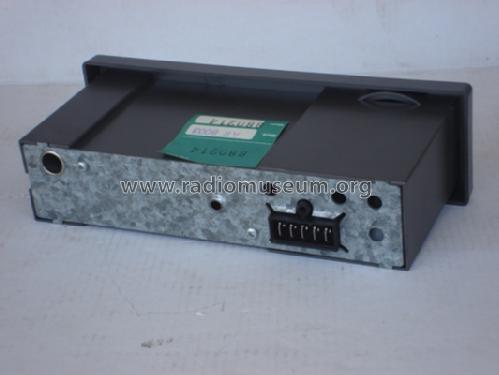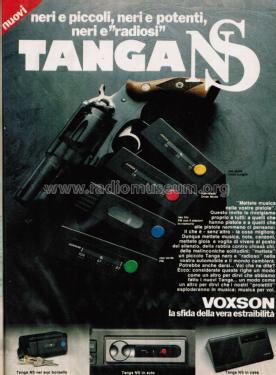Tanga NS Neo Verde
Voxson, FARET (F.A.R.E.T.); Roma
- Country
- Italy
- Manufacturer / Brand
- Voxson, FARET (F.A.R.E.T.); Roma
- Year
- 1980
- Category
- Car Radio, perhaps also + sound player/recorder
- Radiomuseum.org ID
- 134245
- Number of Transistors
- 3
- Semiconductors
- Main principle
- Superheterodyne (common)
- Wave bands
- FM Broadcast Band Only
- Power type and voltage
- Storage Battery for all (e.g. for car radios and amateur radios) / 12 Volt
- Loudspeaker
- - This model requires external speaker(s).
- Power out
- 4.7 W (unknown quality)
- Material
- Bakelite or Plastics (type unknown)
- from Radiomuseum.org
- Model: Tanga NS Neo Verde - Voxson, FARET F.A.R.E.T.; Roma
- Shape
- Chassis only or for «building in»
- Notes
-
La serie del 1980 "Tanga NS" comprendeva 4 modelli ognuno con una sola gamma di onda.
Il modello "Neo Verde" era solo per Modulazione di Frequenza.
Poteva funzionare in casa con apposita plancia di alimentazione.Oltre alla versione FM, veniva anche prodotto per le OM e OL. La versione FM impiegava 2 circuiti integtati, 3 transistor, 11 diodi e 2 led.
- Mentioned in
- -- Original prospect or advert (Quattroruote, editore Mazzocchi, aprile 1980)
- Literature/Schematics (1)
- Antique Radio Magazine n.67, June-July 2005, page 10. Written in Italian.
- Author
- Model page created by Antonio Maida. See "Data change" for further contributors.
- Other Models
-
Here you find 176 models, 146 with images and 98 with schematics for wireless sets etc. In French: TSF for Télégraphie sans fil.
All listed radios etc. from Voxson, FARET (F.A.R.E.T.); Roma
Collections
The model Tanga NS is part of the collections of the following members.
Forum contributions about this model: Voxson, FARET F.A.R.: Tanga NS Neo Verde
Threads: 1 | Posts: 1
Oltre alla Tanaga NS FM, esiste anche una versione, sempre FM, ma con sintonia memorizzabile su 4 stazioni. Premendo il tasto sulla sinistra, si selezionano, in sequenza, 4 stazioni memorizate. la memorizzazione avviene alzando e ruotando il bottoncino sulla destra (di colore blu, mentre quello con sintonia manuale è dicolore versde)
Antonio Maida, 13.Apr.15







